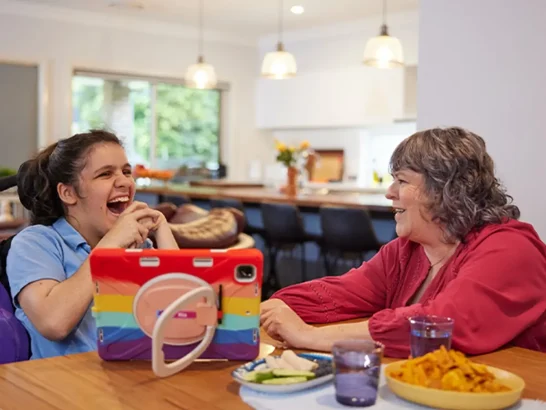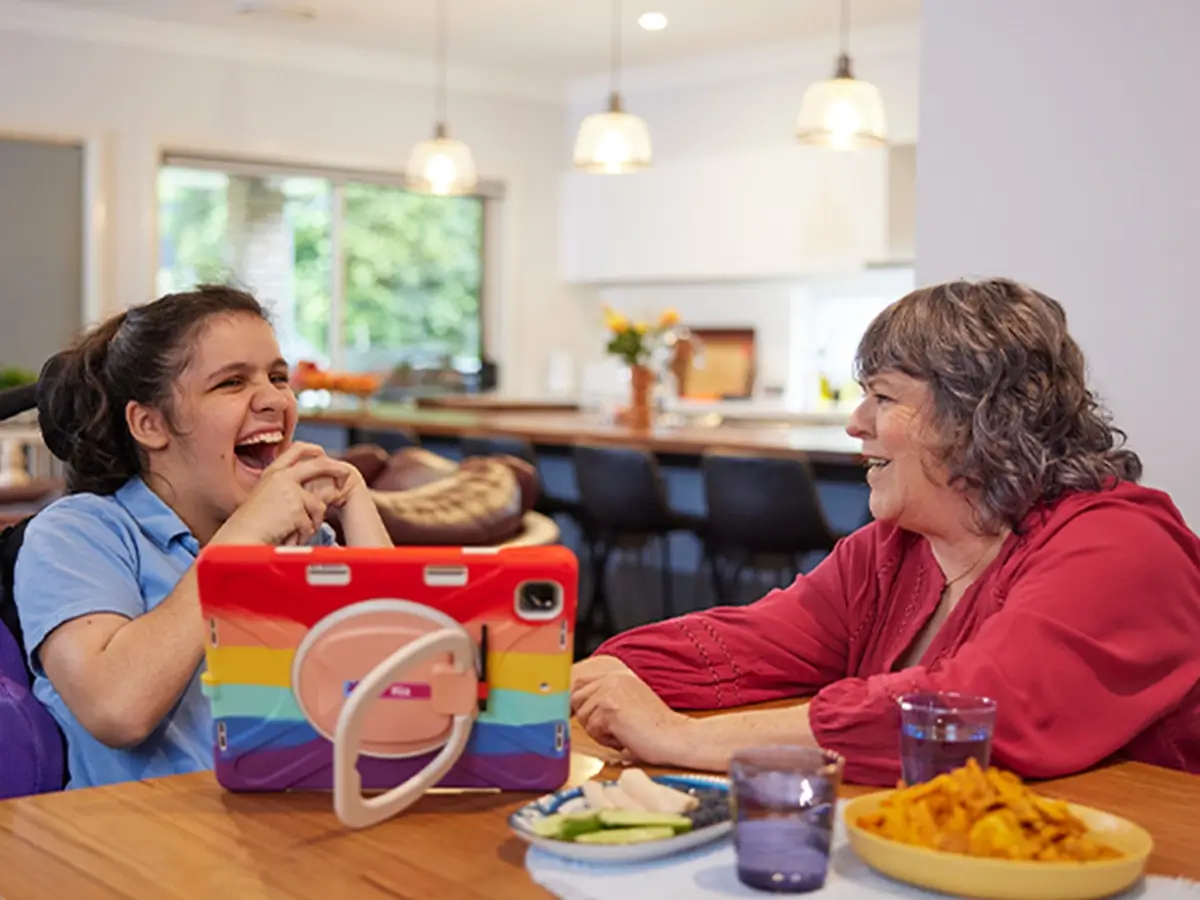In this guide:
Cerebral palsy is a lifelong physical condition that primarily impacts a person’s movement, posture and muscle coordination. Rather than being a single diagnosis, it encompasses several movement-related conditions caused by either brain development differences or injury before, during, or shortly after birth.
No two experiences of cerebral palsy are the same. Sometimes, cerebral palsy may impact a person’s ability to communicate, eat, drink, speak, see, hear or learn, while others may be largely unaffected.
With the right support systems in place, many people living with cerebral palsy can lead full, active and meaningful lives.
What are the main types of cerebral palsy?
The main types of cerebral palsy are:
- Spastic cerebral palsy is the most common type, affecting 70-80% of people. ‘Spasticity’ refers to the stiffness or tightness of muscles that often appears when a person with this type moves.
- Dyskinetic cerebral palsy often occurs together with spasticity and is characterised by involuntary or uncontrolled movements that can either be jerky or very slow.
- Ataxic cerebral palsy is the least common type. Ataxia refers to difficulties with maintaining balance and coordination. It can result in movements that are unsteady and at times, shaky.
- Mixed type cerebral palsy includes a combination of two or more of these different types and their particular symptoms.
Is cerebral palsy painful?
Around three in four people with cerebral palsy will experience pain at some point in their lives, often as a result of the physical effects of their condition.
The pain associated with cerebral palsy can vary wildly – from mild discomfort to more significant feelings – and can affect different areas of the body. This pain can affect a person’s daily activities, sleep quality, relationships or mood.
Managing pain is a personal journey and should be dependent on each individual’s unique experiences and needs. It’s best to be guided by a doctor or healthcare professional in order to find the best way to help with the pain relief and care of those living with cerebral palsy.
What is life like with cerebral palsy?
Living with cerebral palsy is different for each and every person. How cerebral palsy affects people is often dependent on the person’s symptoms. In order to better understand the condition, doctors will often look at three main areas that the condition affects to then assess and treat someone’s situation:
- How a person communicates
- How a person moves their body (gross motor function)
- How a person uses their hands (manual ability).
Because cerebral palsy affects the muscles, any part of the body controlled by muscles can be impacted. For some people, it may only affect a small area, while for others, it may affect their whole body.
Some people with cerebral palsy may have muscles that feel stiff, weak or tight. Others may find their body moving in ways they don’t expect, or they might sometimes shake. When symptoms of cerebral palsy are more serious, a person might have challenges with holding their head upright, swallowing their food, taking comfortable breaths, using the bathroom or digesting their food properly.
Health experts may sometimes use the Goal Attainment Scale (GAS) as a method to help people living with cerebral palsy and their caregivers create and achieve personal goals. These goals can be about fun activities or day-to-day life. Someone might want to find a job they enjoy, make friends, go to the movies, or even write their name more clearly, for instance.
How is cerebral palsy diagnosed?
Diagnosing cerebral palsy is a process that requires a number of tests and assessments to be made. Given that some of its symptoms may look like other conditions, getting a clear answer can take some time.
Additionally, if the condition is mild, doctors will often need to patiently wait and watch to see if the signs progress. This means that it may take years for someone with cerebral palsy to be diagnosed.
During testing, health professionals & doctors pay close attention to see how a child moves and to changes in their muscle tone. They may also check for differences in posture, or to see if a child prefers using one side of their body more than the other.
Brain scans like CT or MRI may be used to see if any damage has been done to the brain.
The General Movements Assessment can also be used by qualified therapy staff from birth to five months old. The test can help spot early signs of cerebral palsy, though it can’t determine how mild or serious the condition may be. Starting help as early as possible will often lead to better outcomes for the child being assessed.
Support for cerebral palsy
Living with cerebral palsy means having a life-long physical condition, but there are many services, resources and programs available to those in need of assistance or care. These support systems generally include welcoming community access programs, early intervention services, personalised therapy, housing assistance, respite care, lifestyle supports, and assistive equipment and technology, as well as a range of apps and tools designed to suit specific needs.
Mable has a community of independent support workers who can offer help. These are experienced people who can assist someone with cerebral palsy, as well as their caregivers with services such as home care, social support, therapy, personal care, and nursing aid.
Learn more about the support services you can find on Mable.
Get started on Mable today.
The information provided in this article is general information only and based on current information at the date of publication. In addition to considering the information shared in this article, Mable encourages you to conduct your own research and seek independent medical advice relative to your circumstances.

